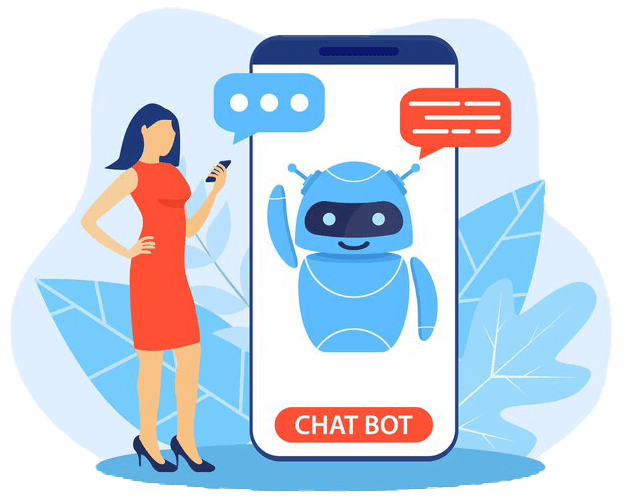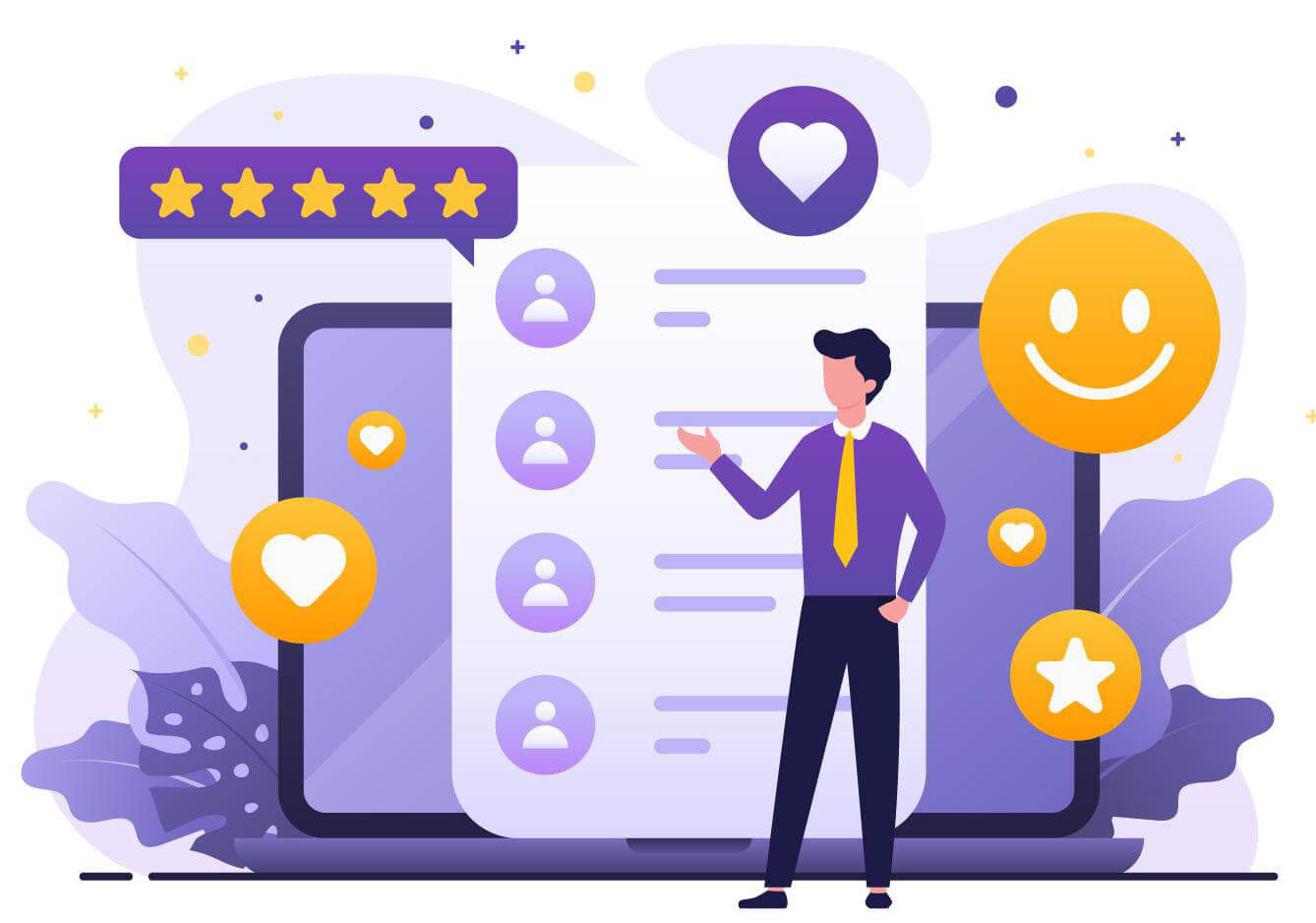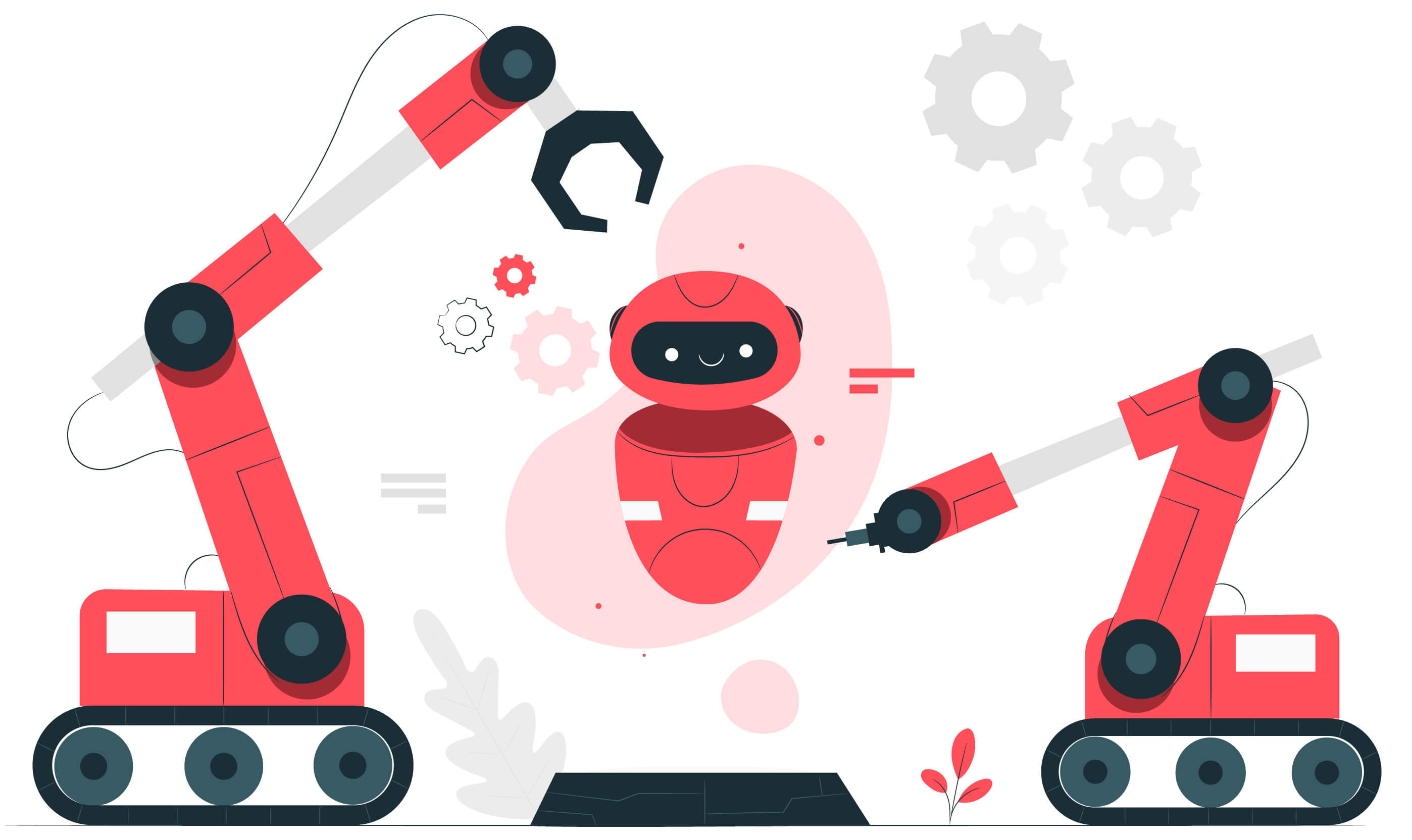What is a Chatbot?
First, let's define a chatbot so we can discuss how you may use them in your marketing and sales efforts.
A chatbot is a kind of automated chat service that may be both entertaining and helpful; the latter use case is more frequent in corporate settings.
Consumers may visit your website and communicate with the chatbot whenever they have questions or concerns, with just the bot on the other end of the line. The consumer inputs their query or concern into the Chatbots, responding. The processing method is specific to each chatbot.
The approach used by some businesses is to scan the customer's content for keywords and then check their databases for any mention of those phrases. They then respond to the consumer with helpful information. A natural language processing system is present in other bots, which was discussed previously.
Utilizing techniques from artificial intelligence (AI), information engineering (IE), computer science (CS), and linguistics, these language processing systems can infer the user's purpose from their words.
Using a photograph (perhaps a stock photo) of a customer service representative, some businesses make it seem like you are conversing with a natural person through their internet Chatbots. But when responses don't sound quite right, customers can usually tell.
Chatbots have come a long way in a short amount of time, but they still have a ways to go before they reach human standards of competence.
How do they work?
The main distinction between a chatbot and a regular app is that the former has to be able to interpret the user's purpose behind the request.
By itself, it cannot understand the customer's intended use case. The proper answer is given to the user once a Chatbots has been taught to assess and determine the user's purpose for their request.
A chatbot can be taught far more quickly and on a much grander scale than a person can. When fed a large volume of conversation logs, a Chatbots may begin to learn what kinds of inquiries need what types of responses.
Types of Chatbots
So now you know what a chatbot is and how it operates, let's dive into the many kinds of Chatbots available for SMB advertising chat and beyond.
Now are many different kinds of chatbots out there. Some operate independently, while others are integrated into existing platforms.
Standalone Chatbots
The first bot option available to you is the solo chatbot, which operates in its app. Typically, if your company develops a standalone Chatbots, it is solely for answering customer questions and addressing their concerns. Since this bot is not prominently displayed on a social networking platform or your website, it's easier for leads and consumers to miss it.

If your consumers want information, they may contact your customer care agents since they are unaware that your firm has a Chatbots option. Since a standalone bot is an application, planning, testing, and deploying it will be time-consuming and expensive. If no one uses the chatbot, all that money and work may have been for nothing.
That is not to suggest that a standalone bot might never play a part in your business, but starting with a messaging app and transitioning over is preferable.
Messenger Chatbots
This is due to the fact that messaging Chatbots has grown quite prevalent in recent years.
If a consumer needs to call out and ask a question, doing so is now exceedingly simple and quick.
Voice Chats
Siri and Alexa are two of the most well-known and widespread examples of voice-enabled Chatbots.
When you ask one of these voice assistants a question or ask them to arrange an appointment, play a piece of music, or search for anything, you interact with a voice-enabled chatbot.
The fact that these bots know your name creates a feeling of personalization that nearly makes you believe you're conversing with a real person, not a machine.

The operation of voice-enabled Chatbots is as follows: you verbalize your request, Siri or Alexa processes it, and they subsequently provide instantaneous information or fulfill your request.
Most of the responses are accurate using voice recognition APIs and text-to-speech services.
Context-Enabled Chatbots
Context-enabled Chatbots may be among the brightest on the market due to their use of artificial intelligence and machine learning. As you probably predicted, context-enabled bots, also known as contextual Chatbots, depend on context. Not only are these bots remember past discussions, but they can also use this research to guide the details they give you now and in the long term.
In a sense, it is as though these robots acquire a memory, similar to how humans do. As the context-aware bot accumulates these memories, it learns how to serve you more effectively.
Service/Action Chatbots
When you ask a service/action chatbot to do an action, it will require some background data (the action) to know what to do (the action).
Because they are tailored to serve a particular role, these bots often have a narrow range of capabilities.
You'd be hard-pressed to get a bot like this to remember your haircut appointment or shopping list.
However, service/action bots are pretty helpful for their intended purposes.
Quick Reply/Scripted Chatbots

Last but not least, short response/scripted Chatbots are similar to service/action bots but provide less involvement.
Again, these bots excel at their specific tasks, but they can't accomplish as much as the other Chatbots we've covered. The bot might be the one to pose questions to you; these could be either multiple-choice or free-form. Afterward, you'll fill out the replies and keep going until the bot has collected all it needs.
What can chatbots by RSoft be used for?
If you're considering implementing a marketing automation chatbot system for your business, the initial overview of bot kinds may have given you some inspiration and concrete ideas.
After introducing these bots into the established protocol, there will be a wide range of effects on your firm.
Here is how chatbots may be helpful to organizations of all sizes, from startups to multinational conglomerates.
Data Providence
One of the Chatbots primary roles is answering simple questions. The objective is to answer queries and pique the interest of consumers and potential buyers. Phone conversations are becoming less common. You won't have to wait as long as you would with email.
Entertainment
Some Chatbots are built for serious business, while others are just for laughs. Depending on your field of work, you probably wouldn't employ bots like these. These bots provide lighthearted entertainment rather than practical information such as product prices or where to discover a company's return policy.
Whether your objective is to learn more about the bot's inner workings via conversation or to confuse it by asking illogical questions, you'll have a great time interacting with these programs.
Appointment-setting
They can do many of the same duties as a human receptionist; hence, Alexa and Siri have earned the moniker "virtual" or "digital" assistants.
Meetings and events, both big and little, may be added to your calendar with the help of any of these voice-enabled, context-aware bots. Even scheduling meetings with bots is possible.

You may avoid unintentional overbooking with the help of more advanced bots that can notify you whether a particular calendar day is already in use. Using a scheduling and appointment-setting bot would be a massive step toward streamlining operations at your firm.
Productivity improvement

It is an understatement to mention that your salespeople have full schedules. They could have to deal with hundreds of daily and weekly calls. Chatbots are a great tool since they may even reduce stress levels.
The bot's quick and accurate responses allow it to handle more client inquiries, relieving pressure on human customer support representatives. This liberates part of the customer support representative's time, which they may devote to other matters.
Customer questions answered
Though your sales team's combined efforts were already successful, you believe a chatbot may make them even more so.
Getting data from a database takes these machines just seconds or minutes when it would take us, humans, far longer.
Overall, more consumers would be satisfied if their inquiries were addressed, even if the bot was only used for internet inquiries and human agents were employed for phone calls.
Satisfying customers
Calling a business, waiting on hold for thirty minutes, and then being hung up on is enough to leave anybody feeling discouraged and frustrated.
But that always occurs, and it's not an excellent approach to keep happy customers.
Customers appreciate it when businesses listen to them and act swiftly to resolve their issues. They find the time it takes for emails to be returned or social media messages to be responded to be too long.
Instant gratification is a hallmark of modern culture, and Chatbots provide just that. Customers who get what they need are more likely to recommend your business to friends, family, and coworkers. Chatbots are another way of automated service that has the potential to make customers happier. It's neither sensible nor healthy for the ordinary individual to work nonstop.
Instead, workers clock in for a certain number of hours each day and leave until Monday (unless it's a holiday). It used to be the case that customers who had questions late at night or on the weekend had to wait for an answer since customer support agents only worked during regular business hours.
Because Chatbots don't sleep, they're there whenever a consumer has a question, no matter the time of day.

Workflow automation

One of the benefits of artificial intelligence is that it enables Chatbots to be virtually automated. Technology like bots may save us money in the long run since we won't need to hire as many humans to do menial tasks. This ensures precision is constantly at the forefront since the rate of human mistakes is reduced when automating processes and other operations.
Conversational interfaces, such as Chatbots, may be pretty useful, but there is also the risk of becoming more of a hindrance than an aid. It wouldn't be hard for a malevolent actor to utilize a bot.
Conclusion
Some people may fear artificial intelligence (AI) tools like Chatbots, yet they ultimately benefit businesses. Since it has already begun, now is an excellent time to join the trend.
Chatbots can significantly assist your business in sales and chatbot marketing automation.
Thanks to the insights shown here, you may plan out how to put RSoft Technologies' Chatbots to work for you and have your most successful and fruitful year yet.


